Fujifilm TCL-X100 review: Is this partner to the X100/X100S the new king of teleconverters?
posted Friday, May 2, 2014 at 11:20 AM EDT

I fell in love with the Fujifilm X100S shortly after we received it last year. It has such a solid feel, and I'm enamored with Fuji's dynamic range options and film simulation modes (they're more than just digital filters, as they change a range of things about the camera's color rendering). And then there's the retro looks that beat other manufacturers' retro looks, thanks in large part to the old-school mode-dial-by-proxy (the various dial combinations create the mode). These are all right up my stylistic alley.
But for my particular shooting style there was the problem of that fixed 35mm equivalent focal length. There are certainly scores of enthusiast photographers who enjoy the simplicity of a fixed focal length and the art of zooming with your feet, and having been fortunate to have shot with the X100S I can very much appreciate the beauty of that logic. But I like shooting portraits and similar subject matter first and foremost, and the 35mm equivalent focal length just wasn't going to work for me. That is, until the TCL-X100 1.4x teleconverter walked into our lab and transformed the X100S into a 50mm eq. FLC.
Just like the X100S, the TCL-X100 feels ultra-solid and professional straight out of the box, including the nice little padded box it ships in and the attractive cloth pouch. Seeing it and holding it for the first time conveyed an immediate sense of "quality build", and the comforting "made in Japan" stenciling only adding to that feeling. It took a few minutes to figure out how to unseat the original ring that covers the threads on the primary X100S 35mm eq. lens, but once we did, the TCL-X100 screwed on with a precise and satisfying feel.
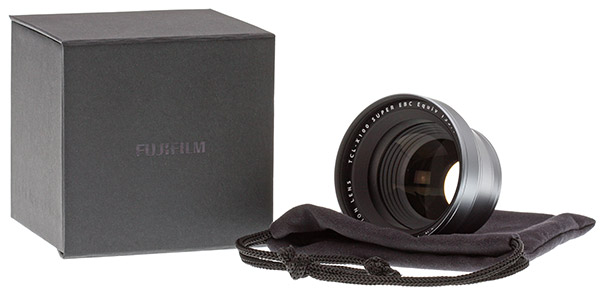
I always thought the lens on the X100S looked proportionally too small for the X100S body. The TCL-X100 changes all that and gives a unique look to the whole package. I seriously doubt your clients or colleagues will turn up their noses when they see this combination; quite the opposite I'd imagine. ("Wow... what is THAT?") It reminds me of The Jetsons.
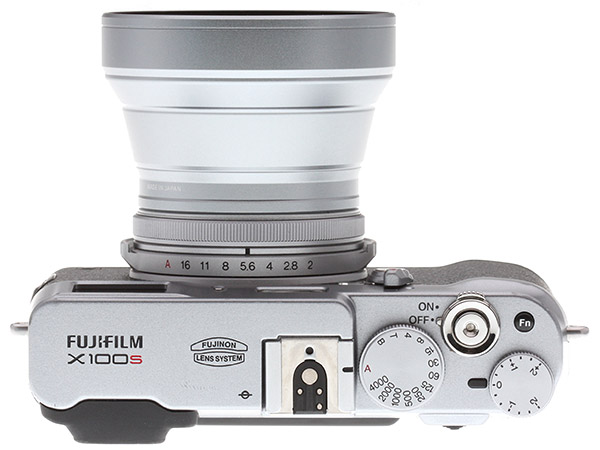
Teleconverter mentality. There are several factors typically mentioned when discussing teleconverter limitations, including often being less sharp, allowing less light to pass through and thus affecting exposure, poorer macro performance, distortion, etc. Fuji's TCL-X100 page claims they've solved most all of these issues on the TCL-X100, so I was eager to take a look for myself.
I first wanted to see if there was a noticeable decline in relative sharpness as compared to the 35mm eq. fixed lens on the X100S when shooting a real world subject. Below are crops sized to 100% resolution to show the results in the center of the frame at the AF point on the metal part of a pair of headphones. If there is any appreciable difference I can't spot it, and this is literally zoomed all the way in (you'd only see it this large on a huge print).
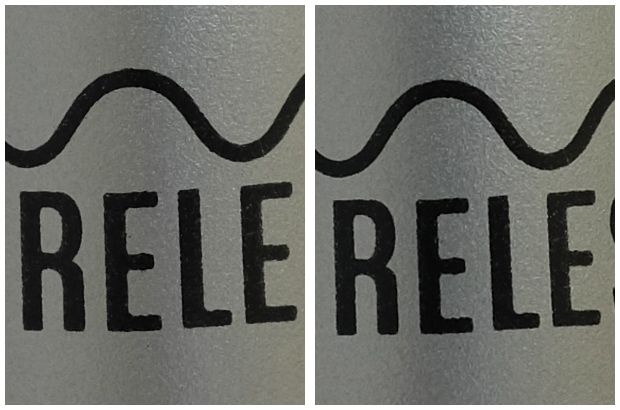
[link to original file] [link to original file]
I also used this test to check exposure, specifically to see if the TCL-X100 would require a slower shutter speed at otherwise equivalent settings in order to expose properly, and it didn't require one. Each of these shots are 1/5s exposures at f/5.6 and ISO 200.
That's center sharpness, but it would be surprising if it could maintain consistent relative sharpness into the corners, so I enlisted our senior lab technician Luke Smith to shoot the standard lab test target we use for analyzing lens sharpness with the TCL-X100 attached as well as removed. The results here are equally surprising, as there is very little, if any distinguishable difference, and this is zoomed in all the way to the top left corner of each frame.
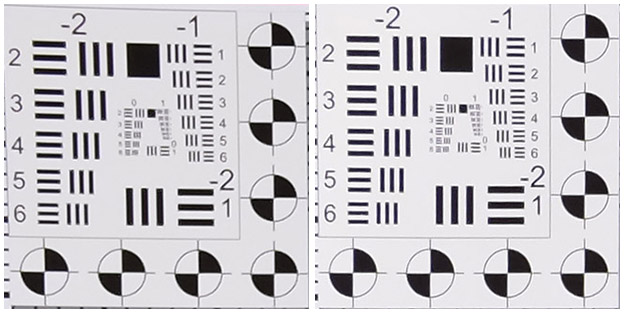
[link to original file] [link to original file]
Fuji's site claims that the TCL-X100 is compatible with the hybrid viewfinder. This is somewhat true, but also a bit misleading for anyone who likes the optical option (OVF). While the framing lines do adjust to accommodate the effect of the teleconverter (with the conversion lens menu item set to the "TELE" option), its barrel protrudes into the lower right corner of the optical window. This means you miss about a quarter of your image if you're viewing it in that mode, but Fuji's site shows the optical mode with no lens barrel in the frame. Just a small gripe and no big deal, as it still works great with the electronic viewfinder, but something for OVF fans to be aware of.
They also claim that macro capabilities are unchanged when adding the teleconverter. For this I again enlisted Luke Smith, who put the X100S onto our macro test rack and did his thing. The results were interesting, as they didn't quite match Fuji's claim that the teleconverter doesn't affect macro capabilities. To further confuse matters, Fuji states that "the 10cm macro distance still applies" and yet also states that "it achieves the minimum working distance of 14cm". Well, no worries for us really, as we measured it on our rack to 12.5cm for the original 35mm eq. lens, so we sort of split the difference there anyway. And yet, after attaching the teleconverter, we measured the minimum focusing distance as 19cm. This is offset partially by the unit having a longer focal length, but the original 35mm lens is still capable of achieving a closer effective distance, as seen in the comparison images below.
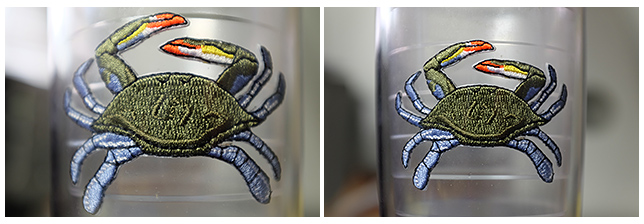
Obviously the fixed lens on the X100S achieves a greater magnification on its own vs having the TCL-X100 attached. This contradicts their claim that macro capabilities are unchanged, although again not a big deal in my opinion. For one thing, you're not likely to be purchasing this lens for its macro capabilities, and for another, the fixed lens does a good job in the macro department so you're already covered there anyway.
To summarize our findings regarding Fuji's performance claims, they are as follows: Is the TCL-X100 as sharp as the 35mm eq. fixed lens? Definitely. Can it achieve the same exposure settings? Check. Is it compatible with the hybrid viewfinder? Yes to the EVF, not quite the OVF. And can it get as close in macro mode? Not quite, but that doesn't really matter since the fixed lens does a good job.
It's important to remember to update your firmware [link to X100S update] before using this lens, and to turn on the "TELE" option in the menu under folder #3 / Conversion Lens. This offers you "OFF" for the standard 35mm eq. lens, "WIDE" for the WCL-X100 wide angle conversion lens and, of course, "TELE" for the TCL-X100. Astute readers are probably already asking what happens if you forget to turn on the "TELE" setting in the menu after attaching the TCL-X100, so I took a deeper look.
Once again using our VFA lab target, we shot with the Conversion Lens setting turned to "TELE" and then turned to "OFF". The results are interesting, as we start to get an idea of the processing the camera is doing internally in order to minimize certain types of distortion, as seen in the lab test images below.
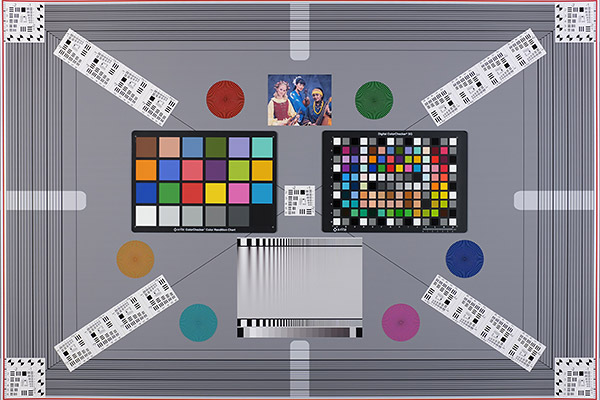
[link to original file]
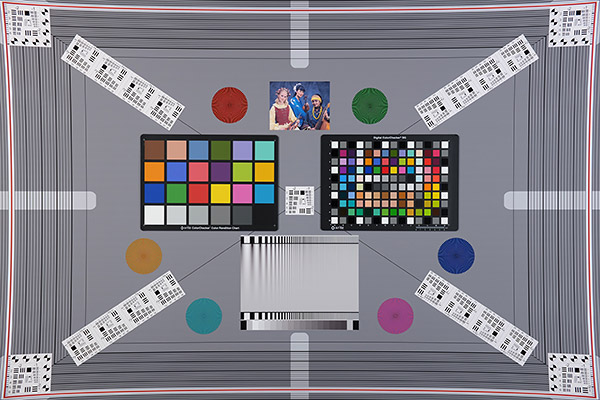
You can clearly see how warped and distorted the outside red lines of the target are, from the pincushion distortion of the conversion lens. As seen below, this is somewhat less apparent in a real world gallery image, but unless you're going for a special effect you will likely want to make sure you use the correct TELE option in the Conversion Lens menu.

distortion of the wood paneling on the right, a reminder to always set it correctly to "TELE"
Real world images. Even before we received our sample unit I'd already taken a look at Fuji's website to see their posted gallery images, and they looked really good to me. But that's still advertising, and one of the reasons you rely on us to provide objective analysis. Their images have a certain otherworldly quality about them, a bit hard to explain, and I was eager to see if I could achieve any shots with that look.
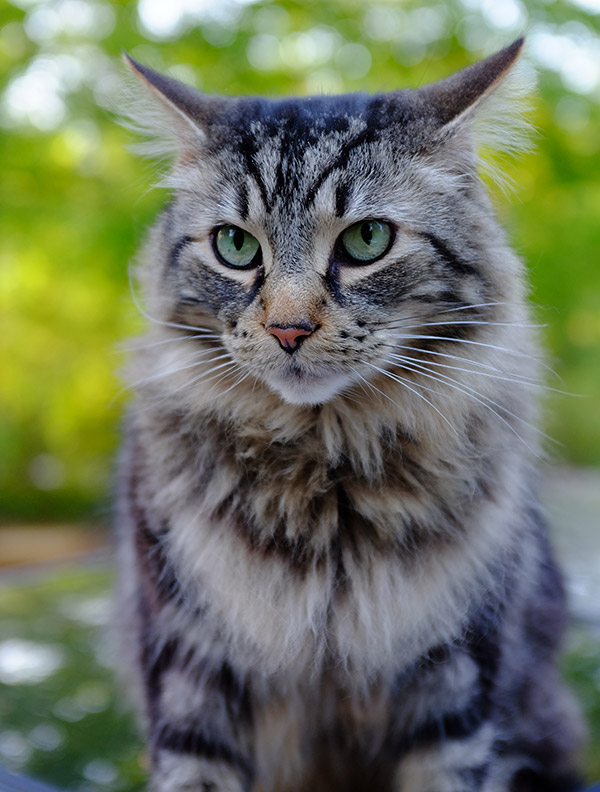
This is one of the best portraits I've been able to achieve of our photogenic Maine Coon cat
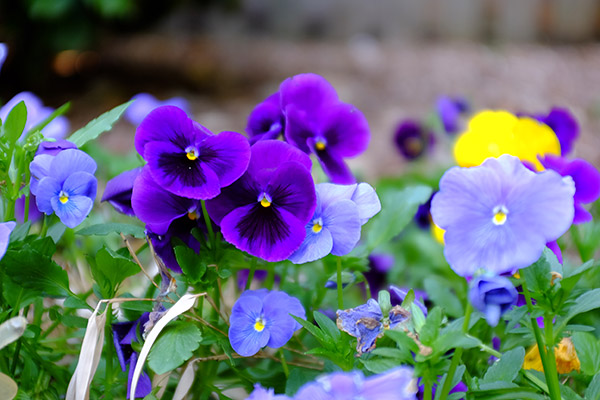
The legendary "Fuji color reproduction" is on display here alongside the shallow DOF
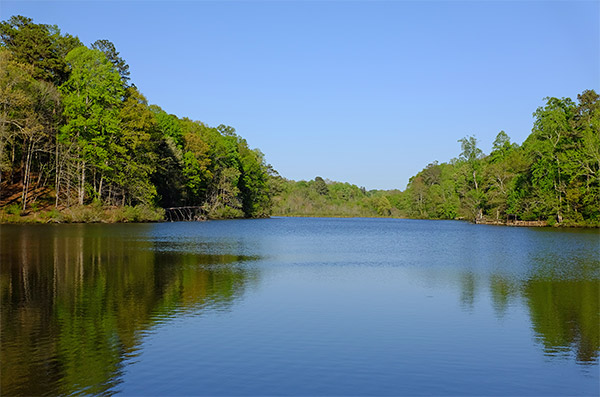
Stopped down a bit here for a better idea of how the TCL-X100 handles landscapes
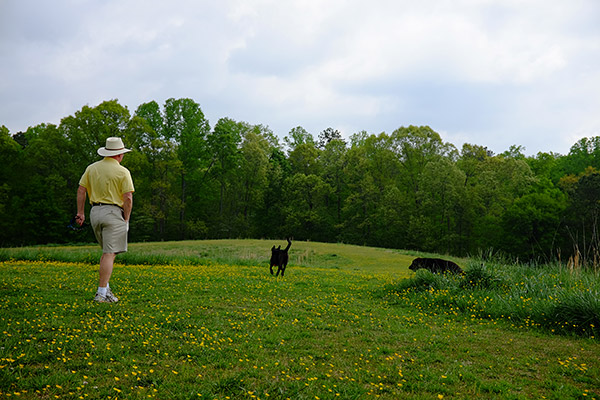
Stopped down to f/4 for yet another landscape perspective
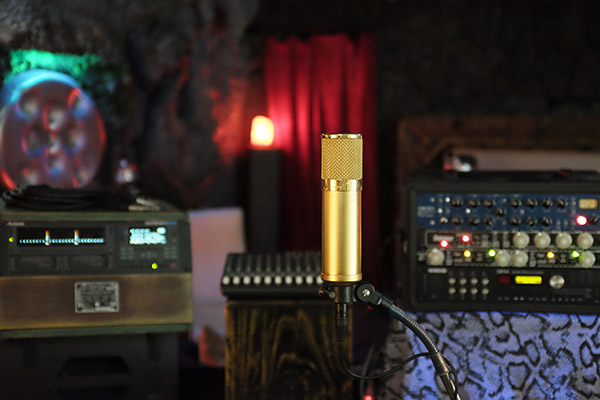
An indoor, high ISO image to give a different representation of the bokeh from the TCL-X100
[To access these images in full resolution, see the EXIF data and see additional images click here for the Fuji X100S gallery, then scroll down until you see images with YTLC as the prefix. Clicking on the thumbnails will access a carrier page where you can then click to see the full resolution images.]
In conclusion. This thing is sweet, that's my conclusion. The build quality, unique look and photographic results combine to create an excellent product. And I fell (further) in love with the X100S in the process, as the 50mm equivalent focal length is much more suited to my shooting style, thus making that camera far more appealing to me. As for the teleconverter itself, the drawbacks are few and minor, making this a no-brainer decision for X100/S owners and also adding an intriguing option for anyone who's been on the fence about buying one due to the fixed focal length constraint. We only award "Dave's Picks" to cameras, but I'm fairly certain that THE Dave won't object if we award the TCL-X100 with an honorary one.
[UPDATE 7/4/14: We've now posted our review of the WCL-X100 wide angle (.8x) converter for the X100/S which can be found here.]
[UPDATE 6/3/14: Adobe Camera Raw just added new support for the TCL-X100 in their new lens profiles update. Additional details on all of the updates can be found here.]